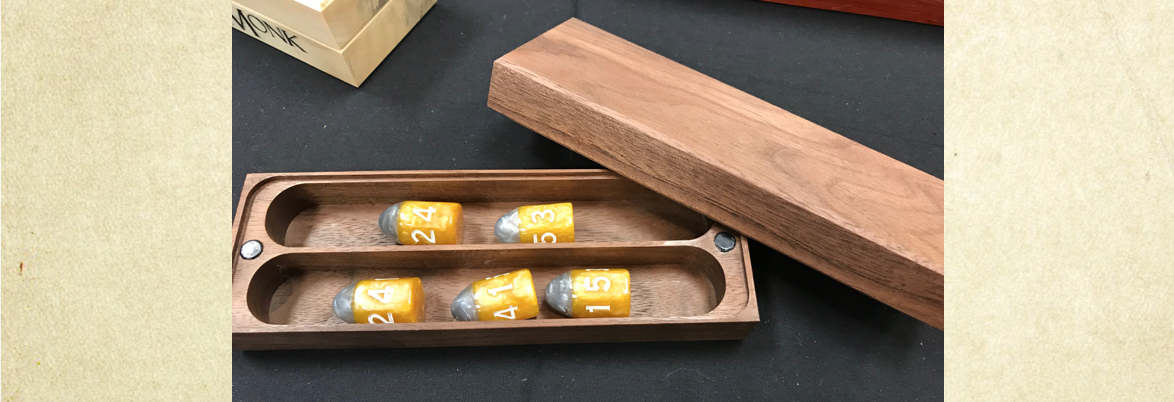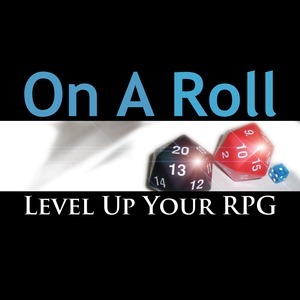Ryan has been developing a tabletop roleplaying game, The Gun Belt for over three years. The game features alien and robot cowboys riding dinosaurs in an interstellar Wild West on a world with no wheels. It is currently in the process of playtesting. This blog explores the process he and his design partner, Ashley, have experienced during that time.

As The Gun Belt began to come together as a cohesive idea, we had to also begin thinking about the game mechanics. This led to the great question of which needs to come first: the mechanic or the genre? We thought this would be an easy one.
The genre comes first. How do I even know what rolls people will ever need to make if I don’t know what the “game” is. I can’t make decisions about mechanics, skills, dice or character sheets unless I have a clear grasp of what the universe, abilities and playable characters will be like. I can’t know I need Force dice if I don’t know that I have Jedi!
Or… The mechanics come first. We are likley going to use an open game license system, like Fate, TinyD6 or Dungeons & Dragons, so I need to be familiar enough with those mechanics to ensure that I design my world in a way that compliments and effectively utilizes those mechanics to their most exciting and most fulfilling extent.
One could easily cite reasons to justify why either should come before the other. Ultimately, as Ashley and I began thinking about _The Gun Belt, _we decided we would develop them concurrently. Doing it that way forced us to examine some game design theories and look at how they applied to our game. Our decisions about these ideas would help us to either create our own mechanic system or help us decide which existing OGL system to adopt.
First, we had to consider how much “crunch” we wanted in our game. Crunch is a word a lot of gamers use for the actual mechanics of a game. It likely comes from the phrase, “number crunching.” Crunch includes how many rules exist, what dice you use, how many modifiers exist, how conflicts are resolved and the math or chart checking that is required. Dungeons & Dragons, for example, has its origins in combat simulation, so it is a crunchier game than Fate, which is a more collaborative rules-light game.
For us, this meant making decisions about how detailed we wanted the mechanical aspect of our game to be? Do we want people to have to roll dice a lot or a little? Would we have encumbrance rules or just hand-wave that kind of thing? Do we need lots of charts with fifty different types of firearms on it, or can we just use “pistols” as the weapon? When someone rolls dice to shoot someone, does their target roll as well to dodge, or is there just a hit or miss target number?
We discussed this at length, recognizing that Ashley is a less is more designer. He is what I refer to as a Collaborative Native (he learned to play tabletop rpgs that were primarily collaborative in nature), and would likely design the game to use zero dice if he could! He enjoys games like Kids on Bikes, _where there is negotiation at the table and narrative input from players drives events in game. I like some crunch (though not TOO much). I am a Collaborative Immigrant (I learned to play tabletop rpgs in classic _Advanced D&D and Star Wars WEG environments where dice were your master and the game runner was god. In the end, we decided to embrace a middle of the road feel, talking about creating our game as a Fate toolkit – strong mechanics with an emphasis on narrative collaboration and little tolerance for extremely detailed rules-laden minutia.
Secondly, we had to consider what kind of behaviors we wanted to encourage or discourage in our players and characters. Well-designed games align their mechanics to reward characters that make choices or behave in ways that are thematic to their genre. This is an incredibly important thing to consider, because when it’s done right, it enhances a game in a way that ensures players are playing the way the designers intended. When it is done poorly, it can create a game in which players are misaligned with the game designers, fracturing game play and causing problems in that game’s gaming community (like Vampre: the Masquerade and its flawed Humanity system).
At its simplest, this really just means if your game is about characters questing to become famous, then your game better have a mechanic for earning renown.
In Dungeons & Dragons, the genre wants characters to kill the monster, so it rewards experience points out of character and gold rewards in character directly in relation to the monster that is killed. In Cthulhu-based games, the genre wants characters to experience the unexplained horror of the mythos while trying to keep their sanity, so most Call of Cthulhu games have some manner of sanity or insanity mechanics to track that. If you go insane, you die or become an NPC or some other fate.
For _The Gun Belt, _we knew we needed a system that allowed the central thematic element of riding dinosaurs like horses, which requires an element of crunch to allow mounted combat and animals that could bite enemies while characters were on their back. We also recognized we wanted the system to be a bit deadly (we wanted bullets to be lethal) and we wanted it to support the notions that the environment on our world was harsh but augmented by the mysterious mineral levitite.
We explored how we might use existing tools in Fate to represent riding animals (something that was surprisingly unrepresented in Fate toolkits). We also realized that lethality requires some crunch, because injuries need to be coded by severity and then balanced by healing rules. Finally, we looked at 7th Sea’s drama dice systems and Star Wars WEG Force point systems to explore how to create levitite with mechanical representation.
In the end, we decided to begin our mechanic development with the Fate system.
Ultimately, we came to recognize that we were far more interested in creating the world than reinventing some new dice mechanics, and that we were quite amenable with using an OGL system. The great thing about Fate specifically is that it is designed as a toolbox that each OGL product can easily build from, allowing us opportunities to develop some mechanics of our own to accomplish the things we desired that the base mechanics in Fate didn’t currently support.
Little did we know that choosing to develop our dice and our world at the same time would also open us up to shifting systems as shifting ideas came to be. We didn’t tempt Fate long…
